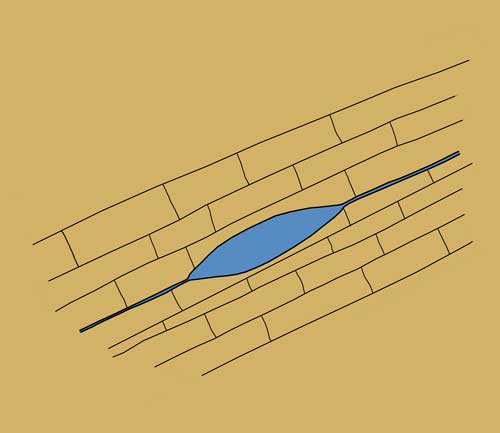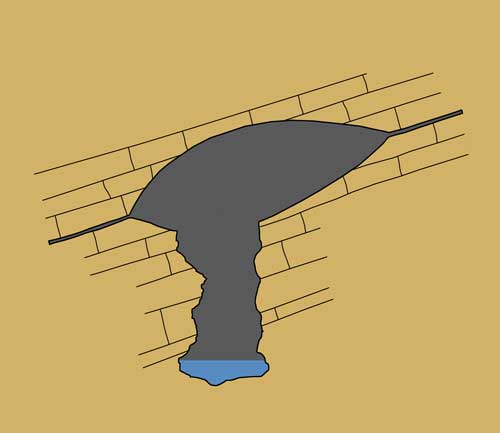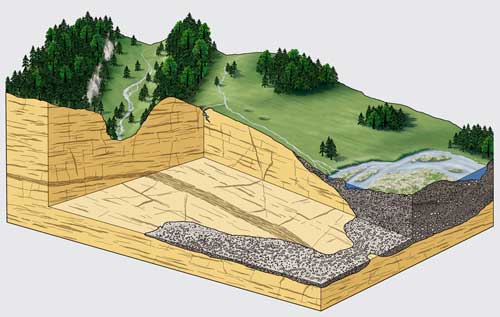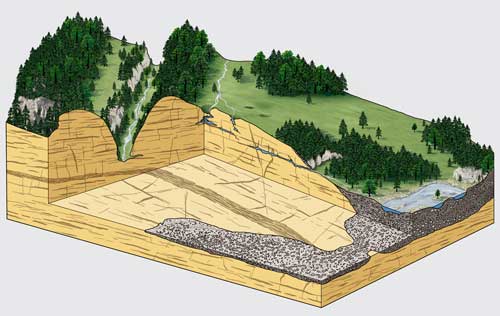In Laufental the interaction of the four factors
are evident:
 |
Corrosion During the first stages of the formation of a cave, water containing carbon dioxide enters through minute cracks and layer interfaces into the rock. |
 |
Erosion The larger the passages, the more water is able to flow though them. When this carries clay, sand and boulders with it, they grind the rock walls – the rock is eroded. It does not matter if the cave is full of water or has just a stream flowing through it. |
 |
Breakdown When a passage has reached a certain size, roofs and walls may begin to collapse, depending on the stability of the rock. The passage changes its character. If a stream flows through it, the fallen boulders are dissolved by corrosion and carried away by the water. The passage increases in height and can, in extreme cases, break through the ground above |
Two million years of karst history
| If we humans wanted to observe the creation of a cave, we would have to be immortal. Water, starting from a hairline crack in the rock, takes tens of thousands, even millions of years, to create a gigantic cave the size of a cathedral. | Caves are only formed under certain conditions. They can develop in very different ways, depending on the rock and the climate, but the following four conditions are of importance:
1. Soluble rock, mostly limestone, occasionally gypsum |
 |
Two million years ago Initially Ibach created a gentle Kaltbrunnental. |
 |
One million years ago Birs has further incised the valley and Ibach deep into Kaltbrunnental. The cave entrances are already so large that Schällbach disappears into one of them. It is possible that it flowed through what is today called Bättlerloch into the Birs. |
 |
Today The Birs valley lowered to its present level. Ibach has carved Kaltbrunnental to the shape we see today. In the meantime many new subterranean water courses have developed. Schällbach seeps into the Schällbachponor and flows via as yet unexplored cavities into Kaltbrunnental, where it reappears as |
Genesis of karst caves
Karst is a generic term for all limestone landscapes with underground drainage. The karst caves in our area can be found mainly on almost horizontal joints or along crevasses. The cave formation is based on penetrating carbonated water, formed from the CO2 of the soil air, which converts the hardly soluble calcium carbonate (15 mg/L) of the limestone into easily soluble calcium bicarbonate (15 g/l) and thus chemically dissolves it.